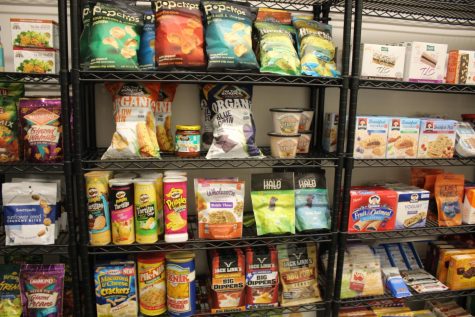
At the lab
November 9, 2022
Food research and development happens in the lab. Mattson is a food company focused on developing innovative products for the food industry. Their company focuses on changing the world of food through engagement with the industry and “inventing the future of food one product at a time.”
Creating new food products to sell to consumers is not an easy process. It requires a lot of brainstorming, prototyping, testing, and finalizing to ensure it is ready to be sold to consumers. Mattson helps consumer packaged goods manufacturers, food service operators, and suppliers formulate products and prepare them for consumer purchase.
Brenda Fong, a principal food scientist at Mattson, details how an idea is turned into a product sold on shelves.
“It starts with consumer insights which can be qualitative or quantitative. We conduct home-use tasks and online questionnaires to get feedback for the client, and then we incorporate ideas with an occasional ideation session. After that, concepts are created and identified. We go into the lab and start prototypes and development. We support our clients through any further in-market, incubation shelf life studies and ensure the product is ready for commercialization,” Fong said.
The food research and development approach at Mattson centers around the consideration of nutrition and sustainability.
“It is our responsibility to be on top of cutting-edge trends or different available ingredients. We do a lot of plant-based development, which utilizes upcycled or regenerative ingredients that are coming to light. We like to inform our clients of all these options so that they can have the knowledge to make more sustainable choices for their decision-making process,” said Maddison Gurrola, a food scientist at Mattson.
Mattson has created a variety of products, such as vegan and plant-based protein beverages, powders, burgers, gluten-free cookies, and snacks that cater to those with different food preferences. However, developing a more comprehensive range of healthy and eco-friendly options for those with dietary restrictions comes with a cost.
“Many of the products we develop are natural channel products, which have dietary restrictions as part of their point of differentiation. These have a higher price point because the formulations can be customized to have those additional requirements with specialized ingredients,” said Lisa Pitka, a principal food scientist at Mattson.
A McKinsey report states, “Consumers expect to spend more money on food with

specific attributes, such as high protein and natural ingredients.” Although these may have a high price point, cutting-edge food products give Americans more choices on what they put in their bodies to affect their health and the environment positively.
“I think the products we create and develop allow for consumer awareness on environmental issues,” Fong said. “We’re trying to incorporate sustainability in our food products so that consumers can be a participant in that when they choose the foods that they want to eat and pay more attention to what they put in their body.”

